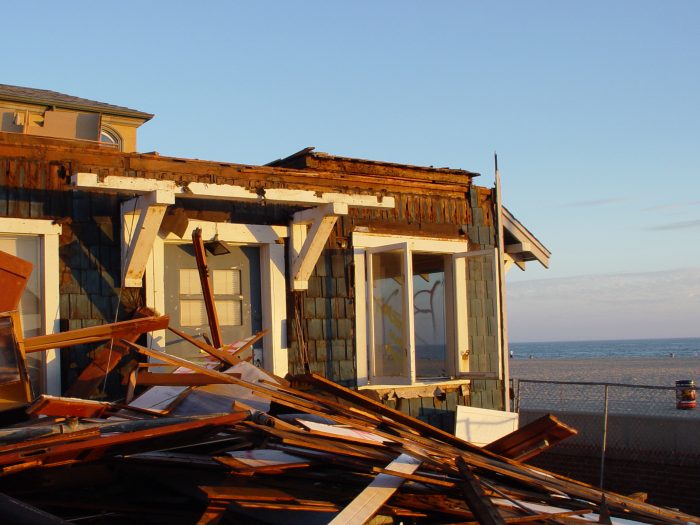What Do Politicians Mean When They Talk About Sustainable Insurance?

Just ask any Californian: Climate change is real and it is affecting policy holders.
According to the LA Times, global climate change has made wildfires both larger and more destructive. The coastal state is also facing flooding and property loss risks as sea levels rise and beaches and cliffs erode. Globally, seas could rise nine feet by the end of the century, as some scientists have predicted.
After catastrophic wildfires swept the Golden State last year, regulators, law makers and even the United Nations have been calling for “sustainable insurance” to address the effects climate change has on the state.
The concept of sustainable insurance, while it is still being developed, involves putting more resources into protecting natural barriers like beaches and wetlands, with the hopes that nature’s natural defenses can mitigate the losses being wrought by climate change. It also means building more resilient communities from fire- and flood-resistant materials and supporting renewable energy projects.
Something innovative needs to happen, and soon, because California’s wildfire losses alone in 2018 were staggering.
Policies Going Under
The Woolsey and Camp Fires of 2018 forced insurers to deny thousands of claims. Ultimately, thousands of homeowners lost their coverage and the state saw a retrenchment of commercial and residential property insurers.
California’s wildfire claims are striking. The beach and cliff erosion it is facing is a risk shared by other areas of the country.
California is sinking nine feet further under sea-level each year. One million Louisiana residents are at risk of coastal flooding. Florida is being swallowed by its own swamps.
That’s why politicians are looking towards “sustainable insurance,” a practice that benefits homeowners in areas of high risk as well as the insurers that cut checks when disaster strikes. The movement is being born against a strong tide, as the federal government in the United States is taking regressive stances when it comes to climate change, pushing for oil and gas drilling in sensitive areas, and undercutting clean water and other environmental regulations.
“From the federal government side, I think we have seen pullback in environmental regulations, but I think it’s important for people to understand that the individual states have continued with the same amount of fervor when it comes to protecting the environment” said Mary Ann Susavidge, chief underwriting officer, AXA XL’s Environmental insurance business.
“Even if there is a general feeling of federal government pullback, we’re really not seeing that impact local enforcement. States are still holding operations and entities accountable by enforcing current federal regulations or more stringent state specific regulations.”
An Official Plan
California State Insurance Commissioner Riccardo Lara saw an opportunity to show Californians that their state government is working to ensure public safety against wildfires and their increasing severity.
Lara knew that in order to combat unprecedented catastrophe, his solution would have to be innovative; his work resulted in the first partnership between the United Nations and an individual state.
The yearlong project between California and the U.N. sets goals for the insurance industry to identify natural risks from climate change and find safe and effective ways to insure against them.
That means, among other things, thinking about how to protect and restore natural buffers such as beaches, reefs and wetlands. That’s why beach erosion, and the loss of wetlands due to irresponsible development are such red flags, not only for preservationists, but for state regulators, and hopefully, insurers.
Changing how we build is another facet of the plan. Constructing streets from heat resistant materials and building more resilient communities are examples of that.
“It’s kind of a way of being proactive to helping us mitigate against potential loss of critical natural infrastructure,” Lara told KCBS Radio.
A push from lawmakers towards climate protecting laws seems like a fool-proof plan, but like politics, sustainability can be tricky.
“I think people are generally still unsure what that really means,” said Susavidge on policy-holder’s interpretation of sustainable insurance.
“‘Am I putting my money in protection, or am I putting my money in changing the way I do things?’”
Let’s Get Things Straight
According to the Principles for Sustainable Insurance, a United Nation’s initiative launched in 2012, the goal of sustainable insurance is to provide “a global framework for the insurance industry to address environmental, social and governance risks and opportunities.”
Signatories to the initiative include Swiss Re, Liberty Mutual, Munich Re, and Generali.
For insurers, it’s not always that simple.
“The economic landscape of the country has always been a lever in the environmental marketplace,” said Susavidge.
And it’s a lever that can bring about positive developments, or even more damaging development practices.
“When we have a boom, it means that more things are getting cleaned up, not just because people have the money, but because they have money to re-invest and redevelop properties.”
The disadvantage of these types of practices can result in urban sprawl.
There are drawbacks to every sustainable practice, but an underwriter’s perspective is unique and simple at the same time.
“We can’t stop Mother Nature,” said Susavidge.
“We are certainly going to have issues to address, but the hope is always that they’re addressed more prudently and in a way that both the regulators are satisfied and the environment is protected.” &










